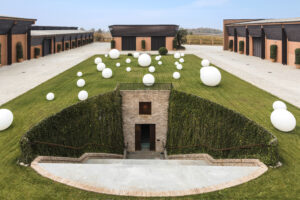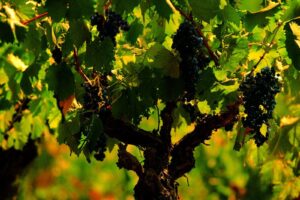The alert is not over, nor is the fear, but after three days of rain, Emilia Romagna and Marche are trying to get their heads out of the mud and, at the very least, assess the damage. Difficult because vast plains remain under water and areas are extremely difficult to reach, with landslides fragmenting the normal road network and bridges collapsing under the force of the floods. The dramatic and complex situation has clearly not spared any productive sector, including wine, with plains vineyards submerged under more than a meter of water and hills vineyards struggling with landslides and washouts. In a situation, to say the least dramatic, destined to worsen again over the weekend, fear for vines may appear of secondary importance, but in the territories, everything holds together and everything is interconnected, from hydrogeological stability to the stability of the economy.
By limiting our focus to our area of expertise, wine growing, the map of damages and concerns takes on different hues depending on the territories considered, with some elements common to all, particularly in the plains: first and foremost, with vineyards submerged for hours and hours, there is a risk of root system asphyxiation. The greatest concern, however, is the total impossibility of accessing the vineyards with agricultural vehicles to ensure the plant’s proper phytosanitary defence during a critical period such as pre-flowering. In fact, under these conditions, the vine is more vulnerable than ever to fungal diseases, particularly downy mildew, which the low temperatures are slowing down.
To make the point of the situation, WineNews heard from some of the protagonists of the wine sector of Emilia Romagna and Marche, such as Gianmaria Cesari, at the helm of Umberto Cesari, on the hills between Bologna and Imola, Filiberto Mazzanti, director of the Consortium Vini di Romagna, which embraces the DOC Colli d’Imola, Colli di Faenza, Colli Romagna Centrale and Rimini, among the most affected areas, Claudio Biondi, president of the Lambrusco Consortium, which has its productive heart in the provinces of Modena and Reggio Emilia, and Alberto Mazzoni, director of the Marchigiano Institute Tutela Vini, which brings together all the denominations of the Marche, where the damages have been more contained, but the concern is still great.
“I don’t want to use the word disaster because it would be unkind to many colleagues from the plains who are going through real drama, both personally and professionally”, says Gianmaria Cesari. “According to colleagues from the provinces of Imola and Forlì, the plants were under one meter of water for 72 hours, risking asphyxiation. On the hills, on the other hand, we have to deal with mudslides and landslides, which have also dragged some vineyards with them, but all in all, it is a manageable situation. Despite functional drainage and culverts, however, 300 mm of water in 36 hours - with peaks of 28-29 mm per hour - are impossible to manage. The issue is that after three and a half months of drought, the earth, which is 40 centimetres deep, was unable to absorb the water, causing the rivers to swell and now flow into the sea. However, as in any dramatic situation, the Emilia Romagna spirit - Gianmaria Cesari emphasises - has an extraordinary ability to respond to difficulties”.
However, as mentioned before, the situation is generally very complicated, especially in the territories included in the Consortium Vini di Romagna, where, among the less dramatic consequences, but with a high symbolic value for the whole world of Italian wine, there is also the dutiful suspension of “Vini ad Arte 2023”, the preview of Romagna Sangiovese and Romagna Albana wines to the Italian and international media, signed by the Romagna Consortium, staged on 30 May in the setting of the International Museum of Ceramics in Faenza. Here, “the majority of the access roads have been blocked by the Civil Protection, and this obviously makes it difficult to have a precise picture of the situation”, says Filiberto Mazzanti, director of the Consortium Vini di Romagna. “Many vineyards have been affected, as have many hilly roads and mountains, which have been massacred or even imploded. We recorded two 36-hour events, each with a rainfall of 4-500 mm, and even more in the Apennine areas. In territories that are often fragile, because they are less manned than in the past, the slabs of sandstone easily form the sliding plane, and landslides, or detachments of rock, lead to the loss of entire stretches of road. The fear now is for the aftermath, for the effects of infiltrations and the risks that can follow”. Ideally going between the rows, “there are many vineyards where it is difficult to access with mechanical means, and this is a problem: the weather should turn fine in June, with temperatures soaring to 30 degrees, and downy mildew spreading, which should be treated, is a great concern. I am thinking of the many biologicals, which will have enormous difficulties, and that will be the worst aspect of a situation that does not make us smile. I predict huge crop losses, let’s just hope that not so many lands are affected, but for now, it’s still difficult to make an estimate, and the sky is always scary ...”, concludes Filiberto Mazzanti.
Claudio Biondi, president of the Lambrusco Consortium, says the situation “in the Lambrusco area, i.e. Modena and Reggio Emilia, has not had obvious damages such as those recorded in neighboring provinces such as Bologna, Imola, and Faenza. The recent heavy rains have caused flooding in the vineyards of the medium and low plains, where it is currently impossible to access agricultural vehicles to carry out phytosanitary defences. The vineyards are in a delicate phenological phase and are particularly susceptible to fungal diseases such as pre-flowering. For the hilly area, where there was obviously no water stagnation, there were instead very strong washouts, particularly in the Lambrusco Grasparossa territories of Canossa and Scandiano, with erosion phenomena of the vineyards, particularly the worked ones. It is premature to discuss the damage; it will take several weeks to get a complete picture”.
Another point to emphasize is that “the plant had an important vegetative activity with this rainfall, so if the apical phase, and thus the leaf phase, should have the upper hand on the feeding of the bunch, the setting could have difficulties, and the plant would go out of balance. We are certainly in a delicate phase, and thus at high risk of fungal diseases such as downy mildew and powdery mildew, but the season’s very low average temperatures may have protected the vineyard. We need to understand how long the weather truce will last so that winemakers can enter the vineyard and apply treatments, because the timing of the intervention is critical, especially in organically managed vineyards with fewer weapons”, adds Claudio Biondi. Finally, in the less troubled areas of Modena, Reggio, and Piacenza, “there is an unknown factor in the root asphyxiation phenomenon: if the apparatus remains under water for many hours, asphyxiation dynamics in the root system could be determined”.
Finally, the situation in the Marche, where concern for the wine world is linked “to the impossibility of returning to the rows in order to guarantee the necessary phytosanitary treatments to the vines, especially in the many hectares of organically managed vineyards that we have in the Marche, a problem which, with the continuation of bad weather and rainfall, risks worsening further”, explains Alberto Mazzoni, director of the Istituto Marchigiano Tutela Vini, recalling that in a few days “160 mm have fallen, out of the total 700 mm that fall in the span of the year. The persistence of this humidity, combined with mild to hot temperatures, encourages the growth of downy mildew. We are in a very delicate phenological period, so great care is required, but when it comes to entering a vineyard with the tractor, we don't even discuss it”. However, producers from the Marches express “modest concern”, according to Mazzoni, who gives an optimistic reading in the knowledge that “at the moment, there is very little we can do, we can only wait, carefully managing the pressure of fungal diseases”. Of course, all this water was unnecessary; drought was not yet a threat in the Marche region. We must be balanced, knowing that ours is a Region with a high biological vocation, where the danger is greater: we have set a specification that complies with Community regulations, but the combination of heat and humidity creates ideal conditions for downy mildew. The hope is that the sun will soon return to dry the vineyards...”, concludes Alberto Mazzoni.
Copyright © 2000/2025
Contatti: info@winenews.it
Seguici anche su Twitter: @WineNewsIt
Seguici anche su Facebook: @winenewsit
Questo articolo è tratto dall'archivio di WineNews - Tutti i diritti riservati - Copyright © 2000/2025








































































































































































































